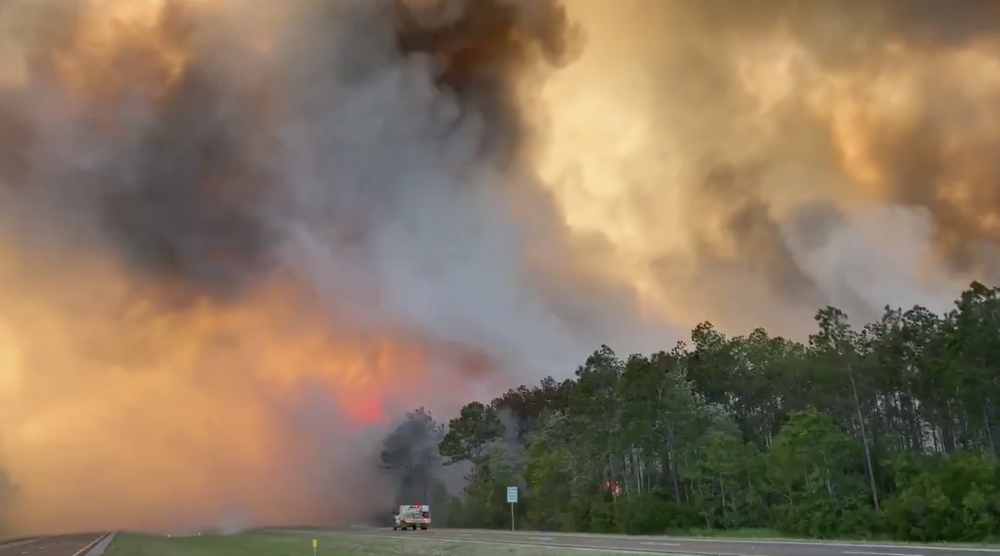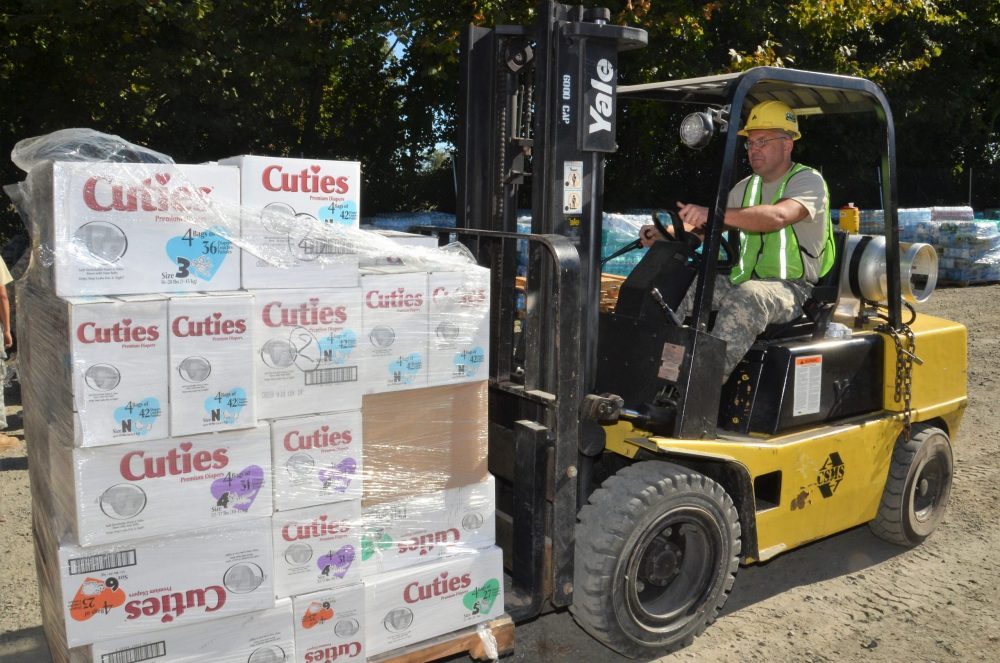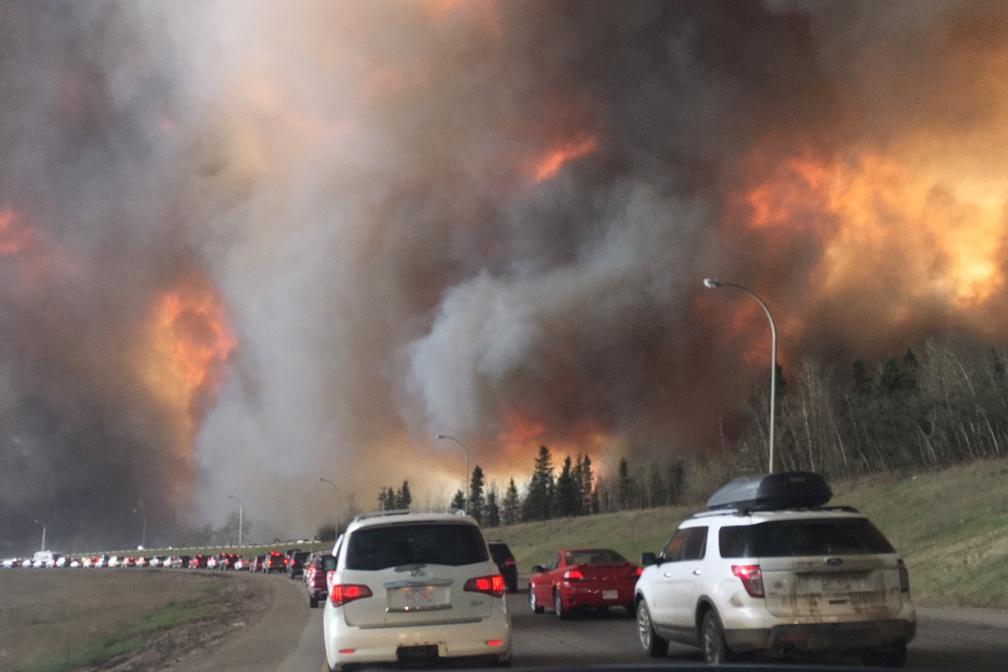
Transportation
The transportation system is responsible for the movement of goods and people from one point to another. The system includes all vehicles including ships and transport trucks, infrastructure, and the governance and support services necessary to keep the transportation system operating safely and efficiently.
Overview
The transportation system is responsible for the movement of goods and people from one point to another. Far more than just “planes, trains and automobiles,” the transportation system includes all vehicles including ships and transport trucks, infrastructure such as roads, railways and bridges, and the governance and support services necessary to keep the transportation system operating safely and efficiently.

During a disaster, the transportation system is one of the most important components of the critical infrastructure and services. Without the transportation system, there is no way to move people out of harm’s way or to bring responders and aid into the affected area. Whether by road, rail, ship or plane the transportation system bears a massive responsibility during an emergency or disaster.
Funding for transportation is not often at the top of the list when considering needs before, during and after disasters. Ensuring the operation of transportation infrastructure and systems is essential to getting supplies to the areas they are needed the most, particularly in making it through the “last mile” from the warehouse or shipping depot to the end user. Transportation systems are also vital to moving first responders and resources into the affected area and moving evacuees and victims out of the area. Key to recovery efforts, the rapid restoration of the transportation systems and infrastructure expedites the delivery of necessary supplies after a disaster.
In developed countries, the concept of transportation likely brings to mind vehicles that run on some type of external power source, whether it be a petroleum product like gasoline or diesel, or an alternative source like electricity or solar energy. Transportation in still-developing countries is much more likely to fall into the category of “active transportation,” that is transportation powered by humans. While more “green” transportation options are becoming available, they are primarily limited to developed countries, leaving still-developing countries to rely on more carbon-intensive and less efficient forms of transportation.
Images of highways packed with vehicles attempting to escape from an impending disaster have become commonplace in many developed countries. These scenes provide an excellent example of the challenges of evacuating large numbers of people from an urban area using privately owned vehicles. Large-scale evacuations can exceed the safe capacity of road infrastructure many times over, requiring them to handle double or triple the amount of traffic for which they were designed.

Evacuations in still-developing countries often suffer from the opposite problem, not having enough transportation to move all of the population at risk. This leads to some people having to evacuate on foot, or choosing not to evacuate at all.
In both developed and still-developing countries, vulnerable populations are often left out of emergency transportation plans either because they are not considered as part of the process, or because there are not enough accessible resources to safely transport all vulnerable individuals.
Disasters can also wreak havoc on transportation infrastructure in locations all over the world. Recent disasters have seen bridges washed away and rail beds undermined by floods, highways and airports damaged in earthquakes, electric trains stranded for hours because of power outages, and ports damaged by explosions, tsunamis and hurricanes.
Key Facts
- There are 17,678 commercial airports in the world, and just 26 of those in only 15 countries were responsible for moving approximately 1.5 billion people and 51 million metric tonnes of cargo in 2018. In 2013, the United States had more than 13,000 airports (both commercial and general use) while Barbados only has a single airport.
- There are thousands of ports in the world, but more than 99 percent of global trade moves through just 835 of them. In 2018, more than 11 billion tons of international freight were shipped by sea.
- According to the International Union of Railways, there are more than 683,506 miles (1.1 million kilometers) of rail in the world, responsible for moving 2.4 trillion passenger miles (3.9 trillion passenger kilometers) and 7 trillion freight tons annually.
- There are approximately 40 million miles (64 million kilometers) of roadway in the world.
- In 2018, Americans took 9.9 billion public transportation trips on a variety of vehicle types: buses, light rail, subways, commuter trains, streetcars and trolleys, cable cars, van pool services, ferries and water taxis, paratransit services, and monorails and tramways.
- According to the 2017 National Household Travel Survey, Americans took almost 300 billion private vehicle trips in 2017 – approximately 30 times the number of trips taken by public transportation.
- During Typhoon Morakot (known in the Philippines as Typhoon Kiko) in 2009, more than 373 miles (600 kilometers) of highway and 196 bridges were damaged or destroyed in Taiwan.
- The complex hub and spoke model of transportation for both people and goods increase the disaster-related impacts in one area (a hub) causing severe issues in other areas (the spokes).
- The transition to just-in-time delivery in critical sectors such as healthcare, food and nutrition, and manufacturing leaves those areas vulnerable to disruptions because of disasters in other places.
- Whether people and goods are being moved by plane, train or ship they all depend on roads for the “last mile” between the transportation hub (airport, train station or port) and their final destination. While long-distance transportation is less likely to be affected by major disasters, the challenge in many locations is to move goods and people from long-distance transportation hubs to affected people. For example, while goods may be able to reach a train yard, if local road infrastructure and systems are damaged or destroyed, it becomes impossible to move those goods from the train yard to a distribution point.
How to Help
- Choose grantees who are pursuing projects that benefit the majority of a population, such as public transit or infrastructure. Allow for increased quantities of people and cargo to move in safer ways by funding public bridge construction or improving the resilience of existing infrastructure to better resist damage from disasters.
- Fund projects that support increased numbers of people and cargo in vehicles as opposed to increased numbers of vehicles. Moving larger quantities of people and cargo will reduce congestion and increase efficiency during emergencies and disasters when it matters most.
- Offer corporate resources (when available) to support the evacuation, relocation and return home of people who are threatened by or experiencing a disaster. Many large corporations have access to transportation options such as private jets, buses or other transportation resources that they can make available to support an emergency or disaster at low- or no-cost.
- Focus on transportation access for vulnerable and marginalized people, particularly those living in poverty, with disabilities and functional needs, and who may be experiencing homelessness. Vulnerable and marginalized people are less likely to have access to private forms of transportation such as personal vehicles, or rely on limited transportation resources such as accessible public transit.
- Develop infrastructure loan programs. These could help rural or small communities redevelop critical transportation infrastructure quickly. They could later be financed by a capital bond levy.
What Funders Are Doing
- Airlink, Inc. received a grant of $57,383.22 through the CDP 2019 Atlantic Hurricane Season Recovery Fund to help them move between islands and carry out response activities.
- American Jewish World Service gave a $221,000 grant to the Sengedag Service Society to repair the main road leading to the highway, along with other supports to a remote Tibetan community after the 2015 earthquake.
- After Hurricane Sandy, Robin Hood provided a $75,000 grant to Hudson Milestones to help replace school buses and accessible passenger vans.
- The Ra5 Foundation awarded a $25,000 grant to the dZi Foundation in 2017 to help build bridges in Nepal and India.
- During the 2014 Ebola outbreak, the Segal Family Foundation gave $16,000 to Airlink so that an additional Forklift could be purchased and used to transfer essential cargo between aircraft and other vehicles.
Learn More
- Center for Disaster Philanthropy Issue Insight: Critical Infrastructure and Systems
- Transportation Research Board of the National Academies: A Guide to Regional Transportation Planning for Disasters, Emergencies, and Significant Events
We welcome the republication of our content. Please credit the Center for Disaster Philanthropy.